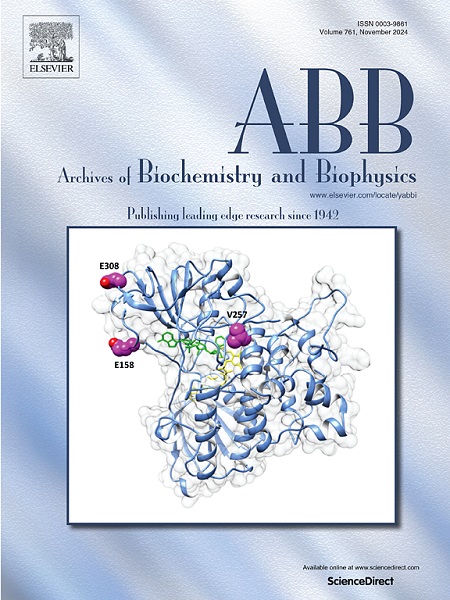Mechanisms of p53 core tetramer stability mediated by multi-interface interactions: A molecular dynamics study
IF 3.8
3区 生物学
Q2 BIOCHEMISTRY & MOLECULAR BIOLOGY
引用次数: 0
Abstract
p53 is a tumor suppressor protein for impeding cancer development and maintaining genetic integrity. The formation of the p53 core tetramer is regulated by multiple cooperative interaction interfaces. To investigate the internal mechanisms of tetramer stability, we performed all-atom molecular dynamics simulations. Our findings indicate that the symmetric interface maintains highly conserved interactions, while the dimer–dimer interface displays notable flexibility. Additionally, we identified a novel salt bridge at the dimer–dimer interface that significantly contributes to the interaction energy. Moreover, the affinity of p53 for DNA is more than twice that of protein–protein interactions, driven primarily by five key residues that form multiple hydrogen bonds. Through independent simulations of the two dimeric models, we provide a theoretical explanation for why only the symmetric dimeric structure has been observed experimentally. The study identifies key regions and residues that contribute to stability at the inter-molecular interaction interfaces within the p53 tetramer, and highlight the important roles of each contact surface in the formation and stability of the tetramer.

多界面相互作用介导的 p53 核心四聚体稳定性机制:分子动力学研究
p53 是一种肿瘤抑制蛋白,可阻碍癌症发展并保持基因完整性。p53 核心四聚体的形成受多个协同作用界面的调控。为了研究四聚体稳定性的内部机制,我们进行了全原子分子动力学模拟。我们的研究结果表明,对称界面保持着高度保守的相互作用,而二聚体界面则显示出显著的灵活性。此外,我们还在二聚体界面上发现了一个新的盐桥,它大大增加了相互作用的能量。此外,p53 与 DNA 的亲和力是蛋白质-蛋白质相互作用的两倍多,这主要是由形成多个氢键的五个关键残基驱动的。通过对两种二聚体模型的独立模拟,我们从理论上解释了为什么实验中只观察到对称二聚体结构。该研究确定了有助于 p53 四聚体分子间相互作用界面稳定性的关键区域和残基,并强调了每个接触面在四聚体的形成和稳定性中的重要作用。
本文章由计算机程序翻译,如有差异,请以英文原文为准。
求助全文
约1分钟内获得全文
求助全文
来源期刊

Archives of biochemistry and biophysics
生物-生化与分子生物学
CiteScore
7.40
自引率
0.00%
发文量
245
审稿时长
26 days
期刊介绍:
Archives of Biochemistry and Biophysics publishes quality original articles and reviews in the developing areas of biochemistry and biophysics.
Research Areas Include:
• Enzyme and protein structure, function, regulation. Folding, turnover, and post-translational processing
• Biological oxidations, free radical reactions, redox signaling, oxygenases, P450 reactions
• Signal transduction, receptors, membrane transport, intracellular signals. Cellular and integrated metabolism.
 求助内容:
求助内容: 应助结果提醒方式:
应助结果提醒方式:


